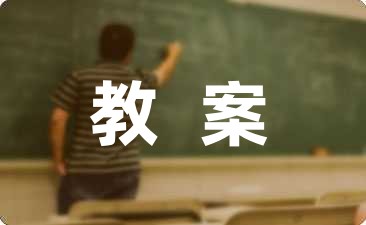高中教案教案
发表时间:2021-04-30Amanwhonevergaveup教案。
一般给学生们上课之前,老师就早早地准备好了教案课件,规划教案课件的时刻悄悄来临了。在写好了教案课件计划后,这样我们接下来的工作才会更加好!你们会写多少教案课件范文呢?小编特地为您收集整理“Amanwhonevergaveup教案”,希望对您的工作和生活有所帮助。
Unit7Amanwhonevergaveup
Lecturer:ChengWenjun
Title:Lesson25(the1stperiod)
Teachingaims:
1.Learntotalkaboutthenewinventionsorally.
2.Understandthewholelessonandreaditfluently.
3.Masterthefollowingmaterials:
Words:able,neatly,own
Phrases:beableto,keepworkingonit,changetheworldmore,thesecondmostusefulinvention
Sentences:I’mtryingtogetittowritemorequickly.
Whichofthesewouldyoumostliketoown?
Learntheuseoftheinfinitive:(1)asobject,(2)astheobjectcomplement,(3)asadverbials
Emphasisanddifficultpoints:
1.Themainpoints---(1)(2)intheteachingobjectives
2.Thedifficultpoints:
(1)getsth.todosth.
(2)thedifferencebetween“beableto”and“can”
(3)thesecondmostusefulinvention:thecombinationoftheordinalnumberandthesuperlativedegree.
(4)Trytounderstanditsstructure“Whichofthesewouldyoumostliketoown?”
Teachingimagination:
1.RewritethedialogueintoanarticletodeveloptheSs’analysisabilities
2.DeveloptheSs’thoughtsbydiscussions
Teachingaids:Ataperecorder;theBb.
Teachingprocedure:
Step1Revision
Gooverthenamesofsomeinventions.
T:Well,weknowEdisonwasagreatinventor.Heinventedalotofthingsallhislife.Nowadays,therearemoreandmoreinventions.
Whatinventionsdoyouknow?
(Light,telephone,television,radio,computer,…)
Step2Readandsay
Davidtrytoinventsomethingtoday.Whatdoeshewanttoinvent?
Let’sgoontolearnUnit7,Lesson25.
Part1
ListentoPart1andanswerthefollowingquestions.
1.WhatisDaviddoing?
2.Whyishedoingthat?
3.Doesitwork?
Teach:(1)getitwritemorequickly让它写得更快。Getsb.todosth.
(2)beableto与can的区别
时态:beableto用于不同的时态;can只有原形过去形式
意义:beableto能做某事;can有更多的意思,如:表示允许;表示猜测
(3)neatlyadv.Writeneatly;putthebooksontheshelfneatly
(4)keepdoingsth.=notgiveupdoingsth.
(5)workonsth.从事…
AsktheSstoreadandactit.
Step3Askandanswer
Part2ofPage31
T:Davidwantedtoinventanewpen.Ifhecan,thatisanewinvention.
Theinventionshavechangedtheworldalot.
Whichinventionsdoyouthinkhavechangedtheworldmore?
Thenshowthefouroldinventions.
Lookatpageiiandtalkaboutit.AskandanswerinpairsbyusingthequestionsinPart2.
(Teach:changetheworldmore;thesecondmostusefulinvention;
Whichofthesewouldyoumostliketoown?;own=have=havegot)
Step4Workbook
Someinventions’namesareverylong,sopeopleusuallyhaveashortwaytocallthem.
Let’sopenourworkbookanddoEx.1
Step5Conclusion
1.Somekeywords:beableto;neatly;keepworkingonit;thesecondmostuseful;own
2.Somekeysentences:
I’mtryingtogetittowritemorequickly.
Whichofthesewouldyoumostliketoown?etc.
Homework
1.Workbookex.23
2.RecitePart1
Lecturer:ChengWenjun
Title:Lesson26(Twolessons)(the2ndperiod)
Teachingaims:
1.Readthepassageandtrytounderstandit.
2.MakesuretofinishEx.1intheworkbook.
3.Masteralltheteachingmaterials.
4.Readthewholelessonfluentlyandthepronunciationandintonationshouldberight.
Words:spirit,inventor,invention,pupil,build,print,track,frighten,frightened,safety,telegraph,lifetime
Phrases:tryout,attheageof,rushout,NewJersey
Sentences:1.ThomasEdisonthoughtthatnomatterhowdifficultsomethingseemed,hecouldfindtheanswer.
2.Hesaidhethoughtmoreofapersonwhohasoneideaandmakesitworkthanofapersonwhohasathousandideasbutdoesn’tdoanythingaboutthem.
Emphasisandimportantpoints:
1.Themainpoints----(1)(2)intheteachingobjectives
2.Thedifficultpoints.
A.wasalwaystryingout过去进行时,表示过去常常做某事。
B.so…that…如此…以致…
C.thoughtmoreof…更看重…thinkalotof…对…有很高评价
Teachingimaginations:
1.AnalyzethetextbyEdison’sdifferentages.
2.MaketheSsfamiliarizethecontentofthetextbyretellingthepassageandcorrectingthesentences.
3.Makeacontestofreading
Teachingaids:Ataperecorder;theBb.
Teachingprocedure:
Step1Revision
A):(Oral)
WhatwasDavidtryingtodo?Why?
Whatwashisidea?
B):Makesentenceswiththefollowingphrases:
1)getsb.todosth.2)beabletocan3)writeneatly4)keepworkingonit
C):Talkabouttheinventionswiththefollowingsentences
1.Whichinventionshavechangedtheworldmorethanothers?
2.Whichoftheinventionsdoyouthinkisthe….
3.Whichoftheinventionswouldyoumostliketoown?
Step2Presentation
Therewasagreatinventorwhoinventedmorethanonethousandthings.
Whoishe?
ShowthepicturesofEdisonandhisinventions.
Step3Pre-reading
TalkaboutEdisonandanswerthequestionsinPart1.
ShowthequestionswithSlide4.
IntroducesomethingaboutEdison(Slide5)
(Learn:spirit;thespiritofaschool;ingoodspirits)
Step4Reading
A:Playagame:Guessthewordbysentencestolearnnewwords.
B:ReadthewholetextquicklythenanswerthequestionsofEx1ofPage128.
C:Analyzethetextbydifferentages.
Paragraph1Edisonwasagreatinventor.Henevergaveup.
Paragraph2--4TalkaboutEdison’schildhood.
Explainsomekeyphrases:
*havenothingtodowith;havesomethingtodowith
*findsb.todosth.
*build…forsb.
*attheageof12=whenhewas12
*ontherailwaystracks
*rushout
*carryhimtosafety;insafety
*so…that…;
eg:Hewassofrightenedthathecouldn’tmove=Hewastoofrightenedtomove.
Hewassotallthathecouldreachit.=Hewastallenoughtoreachit.
*openup
*lifetime;inhislifetime
Practicereadingandtrytoretellitwiththegivenwords.
Paragraph5-6TalkaboutsomethingaboutEdisonatageof22andhisthought.
Explainsomekeywords:
Withthemoney…mostofhislifetime
*thinkalotof=thinkmuchof
*thinkmoreof…thanof…
Step5Exercises:
Choice,fillintheblanks,correctthewrongpartofthesentences.
Makeacontesttoreadthetext
Homework
1.Wb.Ex.3
2.Retellthestory
Lecturer:ChengWenjun
Title:Lesson27(the3rdperiod)
Teachingaims:
1.Mastertheuseoftheinfinitives
2.Trytounderstandthewholepassageandreaditfluently.
3.Masterthefollowingmaterials
Word:graduatePhrase:turndown
Sentences:Ihopeto…
Iplanto…
Grammar:Theinfinitives:
(1)astheobject,(2)astheobjectcomplement,(3)asadverbials
Emphasisanddifficultpoints:
1.Themainpoints---(1)and(2)intheteachingaims
2.Thedifficultpoints:theuseoftheinfinitives
Teachingimagination:Mastertheuseoftheinfinitivebyexercises.
Teachingaids:Ataperecorder;theBb.
Slidecontents:
Slide1Teachingaims;
Slide2somewordsofretellinglesson;
Slide3-5Somepracticeabouttheinfinitive.
Teachingprocedure:
Step1Revision
GooverLesson26.
1).T:WeknowEdisonwasagreatinventor.Buthewasinschoolforonlythreemonth.
Why?Whatdidhedowhenhewas10121622?
LettheSsrecallthecontentsoftheabovequestions.
2)Trytoretelllesson26withthegivenwords.(Slide2)
Step2Presentation
T:Edisonwasagreatinventor.Howaboutyou?
Whatdoyouwanttobeafteryouleaveschool?Discussit.
(Teach:graduate=leaveschool)
Step3Discussion
Part1ofPage33.
LettheSsreadthroughthequestionsandanswers.
Thenletthemworkingroupaskingeachother.
Explain:“hopeto……/wantto…../planto….”Theinfinitiveisusedafterthemastheobject.
Step4Readandsay
Listenandanswerthefollowingquestions.
1.What’swrong?
2.Whatdotheywanttodo?
Readafterthetape.
(Teach:turndown关小声;turnup开大声;besorryaboutsth.)
PointoutthattheinfinitivesinPart2areusedasobjectcomplement.
DoEx1ofWorkbook27
Step5Practice
Part3ofPage33
LettheSslookatPart3andfindoutwhataretheinfinitivesusedas?
Readandlearn:makeastrangenoise
PointoutthattheinfinitivesinPart3areusedasobjectcomplement.
DoEx2ofWorkbook27
Step6Askandanswer
Part4ofPage33
Readthroughthequestionsandtheanswers
ThenlettheSsguesstheuseoftheinfinitive.
Makeouttheuseoftheinfinitivesasadverbials
(Readandlearn:keephimselfbusy.)
HavetheSsaskandanswerinpairs.
Step7Inventsomething
Part5ofPage33
Discusstocomeupwithanideaforaninvention
ThenwritedownwhattheytalkedabouttheirinventionsinEnglish.
Step8Workbook
Showsomekindsofexercisesabouttheinfinitivetopractice(Slide3-5)
Homework
DoEx3intheSs’exercisebooks.
Lecturer:ChengWenjun
Title:Lesson28(Twolessons)(the4thperiod)
Teachingaims:
1.Mastertheuseoftheinfinitives
2.Trytounderstandthewholelessonandreaditfluently.
3.Masterthefollowingmaterials
Words:healthily,clearly,frustrate,frustrated,wonder,worth,confidence
Phrases:beworthsth.haveconfidenceinsb.
Sentences:It’snotaverygoodline.
Tomorrowifpossible.
Sometimesyoumayevenwonderifit’sreallyworthit.
Emphasisanddifficultpoints:
1.Themainpoints—(1)and(2)intheteachingobjectives
2.Thedifficultpoints:1).beworthsth.2).haveconfidenceinsb.
3).wonder+句子
Teachingimaginations:1.LettheSsmakeowndialoguestodeveloptheirskills.
2.LettheSslearntomakeconclusionsbythemselves.
Teachingaids:Ataperecorder,theBb.
Slidecontents:Slide1:Teachingaims
Slide2:Theuseoftheinfinitiveandsomeexercises
Slide3:ThewordsofEx3ofWorkbook27
Slide4:Thequestionsofthelistening
Slide5:Checkpoint7
Slide6:Sometypesofexercises
Teachingprocedures:
Step1Revision
1.Theuseoftheinfinitive(Slide2)
2.Workbookex.3(Slide3)
Step2Listening
Page34,Part1
ReadthroughthequestionsonSlide4.
Listentothetapetwiceandanswerthequestions.
Showtheanswersandthenreadafterthetapes.
Trytomastersomesentences.
Step3Matchandwrite
Page34,Part2
Askthestudentstomatchtheinfinitivesandtheadverbsandmakenewdialogues.
AskseveralSstosharetheirdialogues.
Writeoneoftheirdialoguesintheirexercisebooks.
Step4Readandact
Page34-35ofPart3
T:Here’sadialoguebetweenTinaandAnn.
Ask“What’swrongwithAnn’sCDplayer?”
(It’sbroken)
LettheSspracticethedialogueinpairs.
GetthemtomakeupandactoutnewdialoguesbasedonmodelintheSB.
Step5Poem
Page35,Part4
Listentothetape.AskseveralSstotranslatethepoem.
Explainsomewords
1.frustrate,frustrated
2.wonder+句子
3.beworthsth.doingsth.
4.haveconfidenceinsthsb.
Makeacontesttoseewhoreadsbest.
Step6Checkpoint7(Slide5)
GothroughCheckpoint7anddiscusstheproblemsingroupsoffour.
Sharetheproblemsandtheanswers.
Dosomeexercises(Slide6)
Step7Workbook
Doalltheexercisesintheworkbook.
Homework
DoEx6inexercisebooks.
扩展阅读
Unit7Amanwhonevergaveup
每个老师在上课前需要规划好教案课件,是时候写教案课件了。只有规划好新的教案课件工作,才能更好的在接下来的工作轻装上阵!你们会写适合教案课件的范文吗?为了让您在使用时更加简单方便,下面是小编整理的“Unit7Amanwhonevergaveup”,仅供参考,大家一起来看看吧。
Unit7Amanwhonevergaveup
Lecturer:ChengWenjun
Title:Lesson25(the1stperiod)
Teachingaims:
1.Learntotalkaboutthenewinventionsorally.
2.Understandthewholelessonandreaditfluently.
3.Masterthefollowingmaterials:
Words:able,neatly,own
Phrases:beableto,keepworkingonit,changetheworldmore,thesecondmostusefulinvention
Sentences:I’mtryingtogetittowritemorequickly.
Whichofthesewouldyoumostliketoown?
Learntheuseoftheinfinitive:(1)asobject,(2)astheobjectcomplement,(3)asadverbials
Emphasisanddifficultpoints:
1.Themainpoints---(1)(2)intheteachingobjectives
2.Thedifficultpoints:
(1)getsth.todosth.
(2)thedifferencebetween“beableto”and“can”
(3)thesecondmostusefulinvention:thecombinationoftheordinalnumberandthesuperlativedegree.
(4)Trytounderstanditsstructure“Whichofthesewouldyoumostliketoown?”
Teachingimagination:
1.RewritethedialogueintoanarticletodeveloptheSs’analysisabilities
2.DeveloptheSs’thoughtsbydiscussions
Teachingaids:Ataperecorder;theBb.
Teachingprocedure:
Step1Revision
Gooverthenamesofsomeinventions.
T:Well,weknowEdisonwasagreatinventor.Heinventedalotofthingsallhislife.Nowadays,therearemoreandmoreinventions.
Whatinventionsdoyouknow?
(Light,telephone,television,radio,computer,…)
Step2Readandsay
Davidtrytoinventsomethingtoday.Whatdoeshewanttoinvent?
Let’sgoontolearnUnit7,Lesson25.
Part1
ListentoPart1andanswerthefollowingquestions.
1.WhatisDaviddoing?
2.Whyishedoingthat?
3.Doesitwork?
Teach:(1)getitwritemorequickly让它写得更快。Getsb.todosth.
(2)beableto与can的区别
时态:beableto用于不同的时态;can只有原形过去形式
意义:beableto能做某事;can有更多的意思,如:表示允许;表示猜测
(3)neatlyadv.Writeneatly;putthebooksontheshelfneatly
(4)keepdoingsth.=notgiveupdoingsth.
(5)workonsth.从事…
AsktheSstoreadandactit.
Step3Askandanswer
Part2ofPage31
T:Davidwantedtoinventanewpen.Ifhecan,thatisanewinvention.
Theinventionshavechangedtheworldalot.
Whichinventionsdoyouthinkhavechangedtheworldmore?
Thenshowthefouroldinventions.
Lookatpageiiandtalkaboutit.AskandanswerinpairsbyusingthequestionsinPart2.
(Teach:changetheworldmore;thesecondmostusefulinvention;
Whichofthesewouldyoumostliketoown?;own=have=havegot)
Step4Workbook
Someinventions’namesareverylong,sopeopleusuallyhaveashortwaytocallthem.
Let’sopenourworkbookanddoEx.1
Step5Conclusion
1.Somekeywords:beableto;neatly;keepworkingonit;thesecondmostuseful;own
2.Somekeysentences:
I’mtryingtogetittowritemorequickly.
Whichofthesewouldyoumostliketoown?etc.
Homework
1.Workbookex.23
2.RecitePart1
Lecturer:ChengWenjun
Title:Lesson26(Twolessons)(the2ndperiod)
Teachingaims:
1.Readthepassageandtrytounderstandit.
2.MakesuretofinishEx.1intheworkbook.
3.Masteralltheteachingmaterials.
4.Readthewholelessonfluentlyandthepronunciationandintonationshouldberight.
Words:spirit,inventor,invention,pupil,build,print,track,frighten,frightened,safety,telegraph,lifetime
Phrases:tryout,attheageof,rushout,NewJersey
Sentences:1.ThomasEdisonthoughtthatnomatterhowdifficultsomethingseemed,hecouldfindtheanswer.
2.Hesaidhethoughtmoreofapersonwhohasoneideaandmakesitworkthanofapersonwhohasathousandideasbutdoesn’tdoanythingaboutthem.
Emphasisandimportantpoints:
1.Themainpoints----(1)(2)intheteachingobjectives
2.Thedifficultpoints.
A.wasalwaystryingout过去进行时,表示过去常常做某事。
B.so…that…如此…以致…
C.thoughtmoreof…更看重…thinkalotof…对…有很高评价
Teachingimaginations:
1.AnalyzethetextbyEdison’sdifferentages.
2.MaketheSsfamiliarizethecontentofthetextbyretellingthepassageandcorrectingthesentences.
3.Makeacontestofreading
Teachingaids:Ataperecorder;theBb.
Teachingprocedure:
Step1Revision
A):(Oral)
WhatwasDavidtryingtodo?Why?
Whatwashisidea?
B):Makesentenceswiththefollowingphrases:
1)getsb.todosth.2)beabletocan3)writeneatly4)keepworkingonit
C):Talkabouttheinventionswiththefollowingsentences
1.Whichinventionshavechangedtheworldmorethanothers?
2.Whichoftheinventionsdoyouthinkisthe….
3.Whichoftheinventionswouldyoumostliketoown?
Step2Presentation
Therewasagreatinventorwhoinventedmorethanonethousandthings.
Whoishe?
ShowthepicturesofEdisonandhisinventions.
Step3Pre-reading
TalkaboutEdisonandanswerthequestionsinPart1.
ShowthequestionswithSlide4.
IntroducesomethingaboutEdison(Slide5)
(Learn:spirit;thespiritofaschool;ingoodspirits)
Step4Reading
A:Playagame:Guessthewordbysentencestolearnnewwords.
B:ReadthewholetextquicklythenanswerthequestionsofEx1ofPage128.
C:Analyzethetextbydifferentages.
Paragraph1Edisonwasagreatinventor.Henevergaveup.
Paragraph2--4TalkaboutEdison’schildhood.
Explainsomekeyphrases:
*havenothingtodowith;havesomethingtodowith
*findsb.todosth.
*build…forsb.
*attheageof12=whenhewas12
*ontherailwaystracks
*rushout
*carryhimtosafety;insafety
*so…that…;
eg:Hewassofrightenedthathecouldn’tmove=Hewastoofrightenedtomove.
Hewassotallthathecouldreachit.=Hewastallenoughtoreachit.
*openup
*lifetime;inhislifetime
Practicereadingandtrytoretellitwiththegivenwords.
Paragraph5-6TalkaboutsomethingaboutEdisonatageof22andhisthought.
Explainsomekeywords:
Withthemoney…mostofhislifetime
*thinkalotof=thinkmuchof
*thinkmoreof…thanof…
Step5Exercises:
Choice,fillintheblanks,correctthewrongpartofthesentences.
Makeacontesttoreadthetext
Homework
1.Wb.Ex.3
2.Retellthestory
Lecturer:ChengWenjun
Title:Lesson27(the3rdperiod)
Teachingaims:
1.Mastertheuseoftheinfinitives
2.Trytounderstandthewholepassageandreaditfluently.
3.Masterthefollowingmaterials
Word:graduatePhrase:turndown
Sentences:Ihopeto…
Iplanto…
Grammar:Theinfinitives:
(1)astheobject,(2)astheobjectcomplement,(3)asadverbials
Emphasisanddifficultpoints:
1.Themainpoints---(1)and(2)intheteachingaims
2.Thedifficultpoints:theuseoftheinfinitives
Teachingimagination:Mastertheuseoftheinfinitivebyexercises.
Teachingaids:Ataperecorder;theBb.
Slidecontents:
Slide1Teachingaims;
Slide2somewordsofretellinglesson;
Slide3-5Somepracticeabouttheinfinitive.
Teachingprocedure:
Step1Revision
GooverLesson26.
1).T:WeknowEdisonwasagreatinventor.Buthewasinschoolforonlythreemonth.
Why?Whatdidhedowhenhewas10121622?
LettheSsrecallthecontentsoftheabovequestions.
2)Trytoretelllesson26withthegivenwords.(Slide2)
Step2Presentation
T:Edisonwasagreatinventor.Howaboutyou?
Whatdoyouwanttobeafteryouleaveschool?Discussit.
(Teach:graduate=leaveschool)
Step3Discussion
Part1ofPage33.
LettheSsreadthroughthequestionsandanswers.
Thenletthemworkingroupaskingeachother.
Explain:“hopeto……/wantto…../planto….”Theinfinitiveisusedafterthemastheobject.
Step4Readandsay
Listenandanswerthefollowingquestions.
1.What’swrong?
2.Whatdotheywanttodo?
Readafterthetape.
(Teach:turndown关小声;turnup开大声;besorryaboutsth.)
PointoutthattheinfinitivesinPart2areusedasobjectcomplement.
DoEx1ofWorkbook27
Step5Practice
Part3ofPage33
LettheSslookatPart3andfindoutwhataretheinfinitivesusedas?
Readandlearn:makeastrangenoise
PointoutthattheinfinitivesinPart3areusedasobjectcomplement.
DoEx2ofWorkbook27
Step6Askandanswer
Part4ofPage33
Readthroughthequestionsandtheanswers
ThenlettheSsguesstheuseoftheinfinitive.
Makeouttheuseoftheinfinitivesasadverbials
(Readandlearn:keephimselfbusy.)
HavetheSsaskandanswerinpairs.
Step7Inventsomething
Part5ofPage33
Discusstocomeupwithanideaforaninvention
ThenwritedownwhattheytalkedabouttheirinventionsinEnglish.
Step8Workbook
Showsomekindsofexercisesabouttheinfinitivetopractice(Slide3-5)
Homework
DoEx3intheSs’exercisebooks.
Lecturer:ChengWenjun
Title:Lesson28(Twolessons)(the4thperiod)
Teachingaims:
1.Mastertheuseoftheinfinitives
2.Trytounderstandthewholelessonandreaditfluently.
3.Masterthefollowingmaterials
Words:healthily,clearly,frustrate,frustrated,wonder,worth,confidence
Phrases:beworthsth.haveconfidenceinsb.
Sentences:It’snotaverygoodline.
Tomorrowifpossible.
Sometimesyoumayevenwonderifit’sreallyworthit.
Emphasisanddifficultpoints:
1.Themainpoints—(1)and(2)intheteachingobjectives
2.Thedifficultpoints:1).beworthsth.2).haveconfidenceinsb.
3).wonder+句子
Teachingimaginations:1.LettheSsmakeowndialoguestodeveloptheirskills.
2.LettheSslearntomakeconclusionsbythemselves.
Teachingaids:Ataperecorder,theBb.
Slidecontents:Slide1:Teachingaims
Slide2:Theuseoftheinfinitiveandsomeexercises
Slide3:ThewordsofEx3ofWorkbook27
Slide4:Thequestionsofthelistening
Slide5:Checkpoint7
Slide6:Sometypesofexercises
Teachingprocedures:
Step1Revision
1.Theuseoftheinfinitive(Slide2)
2.Workbookex.3(Slide3)
Step2Listening
Page34,Part1
ReadthroughthequestionsonSlide4.
Listentothetapetwiceandanswerthequestions.
Showtheanswersandthenreadafterthetapes.
Trytomastersomesentences.
Step3Matchandwrite
Page34,Part2
Askthestudentstomatchtheinfinitivesandtheadverbsandmakenewdialogues.
AskseveralSstosharetheirdialogues.
Writeoneoftheirdialoguesintheirexercisebooks.
Step4Readandact
Page34-35ofPart3
T:Here’sadialoguebetweenTinaandAnn.
Ask“What’swrongwithAnn’sCDplayer?”
(It’sbroken)
LettheSspracticethedialogueinpairs.
GetthemtomakeupandactoutnewdialoguesbasedonmodelintheSB.
Step5Poem
Page35,Part4
Listentothetape.AskseveralSstotranslatethepoem.
Explainsomewords
1.frustrate,frustrated
2.wonder+句子
3.beworthsth.doingsth.
4.haveconfidenceinsthsb.
Makeacontesttoseewhoreadsbest.
Step6Checkpoint7(Slide5)
GothroughCheckpoint7anddiscusstheproblemsingroupsoffour.
Sharetheproblemsandtheanswers.
Dosomeexercises(Slide6)
Step7Workbook
Doalltheexercisesintheworkbook.
Homework
DoEx6inexercisebooks.
教案
目的要求:
一、认识鲁迅。
了解童年时鲁迅爱美丽的自然景物,爱动人的民间传说,爱读书学习,恭敬学识渊博的人,爱绘画,爱一切新鲜活泼的生活的性格和生活情趣。
理解鲁迅在永别故乡和流离颠沛中,追忆童年生活时的一种惆怅的失落感。
明白鲁迅“夕拾”“朝花”的深刻的批判精神和强烈的爱憎感情。
二、学习本文依照时间、空间顺序有层次的记叙和生动、具体的描写。
三、能够记叙自己经历的印象深刻的人和事,要求内容充实,增进记叙的兴趣。
要点难点
学习要点应放在第一大段“百草园”。即作家抓住特点写景和写景中确切使用形容词、动词这一部分。只有深刻体味到在“百草园”这个自由广阔的天地里能够享受到无穷乐趣这一点,才能进一步理解“三味书屋”单调、沉闷、枯燥的生活是怎样束缚和摧残着儿童身心健康的发展的。
难点:
1.弄懂插叙美女蛇的故事的作用,特别是理解插叙后的一段议论的含义。
2.正确理解鲁迅对三味书屋生活的态度。
3.理解结尾的话。
4.理解行文中叙述口吻的变化。
写作背景
本文的发表、结集和写作背景这是一篇回忆性的散文,写于1926年9月18日,最早发表于同年10月10日《莽原》半月刊第十九期上,副题:《旧事重提之六》,后由作者收入散文集《朝花夕拾》。
从当时的社会政治形势看,我国正处在第一次国内革命战争高潮时期,国共合作的国民革命军顺利北伐,冲击着北洋军阀的统治。另一方面,封建军阀和帝国主义势力加紧迫害革命力量,斗争很尖锐。无论是在1924年的女师大事件中,还是1926年发生的“三·一八”惨案中,鲁迅先生始终坚定地站在爱国青年学生一边,站在斗争的最前列,写下了《纪念刘和珍君》、《无花的蔷薇之二》、《死地》、《可惨与可笑》等一系列文章,与反动势力进行了毫不妥协的战斗。当然,这也就更加触怒了封建军阀,而被诬陷,被通缉。为了安全起见,鲁迅先生在许寿裳等友人的敦促和帮助下,先是暂避在西城锦什坊的莽原社里,后又辗转住进几家外国医院,最后于9月初到达厦门,经林语堂推荐,在厦门大学国文系任教。
鲁迅在厦大仅一百三十多天的日子里,一方面为革命风暴在南方的兴起而欢欣鼓舞,正如9月14日给正在广州的许广平的信中所说;”此地北伐顺利的消息也甚多,极快人意。”
可是,另一方面,鲁迅不久就发现,厦门也骨子里和北京没有什么两样,“沉沉如死”。厦大校长兼国学院院长林文庆,是个顽固守旧分子,他使厦大弥散着尊孔复古的空气,令人窒息。林文庆与跟踪鲁迅而来的“现代评论派”分子串通起来,以种种卑劣手段排挤鲁迅。鲁迅此时又陷入渴望战斗而不可得的新的孤寂与苦闷之中,于是,对于往事的回忆便开始在他心中酝酿了,这正如《故事新编·序言》中所说:“直到1926年的秋天,一个人住在厦门的石屋里,对着大海,翻着古书,四近无生人气,心里空空洞洞。”“这时我不愿想到目前,于是回忆在心中出土了”。《朝花夕拾》小引中还有如下说明:“……这回便轮到陆续载在《莽原》上的《旧事重提》,我还替他改了一个名称:《朝花夕拾》。”“这十篇就是从记忆中抄出来的,……后五篇却在厦门大学的图书馆的楼上,已经是被学者挤出集团之后了。”“朝花”,即清晨带露珠、色香“自然要好得多”的鲜花,指鲁迅青少年时的事;“夕拾”,是说直到中年以后才在回忆中把它们写出来
借以慰藉“夕时”“离奇和芜杂”的心情。
鲁迅在厦大期间写的后五篇回忆性散文是:《从百草园到三味书屋》、《父亲的病》、《琐记》、《藤野先生》、《范爱农》;此前在北京期间写的前五篇回忆性散文有:《狗·猫·鼠》、《阿长与?山海经?》、《二十四孝图》、《五猖会》、《无常》。《朝花夕拾》中的散文,形式多样,笔法灵活,抒情之中见讽刺,叙述之中显深意,严肃的内蕴常以幽默诙谐的语言出之,构成了独特的艺术风格。
段落大意
百草园和三味书屋是鲁迅童年生活过的两个地方。阅读时抓住地点的变化可将全文分为两部分。每部分又可按时间和事情的不同分为几层。
全文可分两部分。
第一部分(1—8段):回忆百草园的有趣生活。又可分四层。
一层(1段):总的介绍百草园情况。点出是“我的乐园”,充满留恋之情。
二层(2段):写热天百草园充满无限乐趣。
三层(3—6段):写长妈妈讲的美女蛇故事及“我”的感慨。
四层(7—8段):写冬天百草园雪地捕鸟的乐趣。
第二部分(9段—结束):回忆在三味书屋读书的经历。可分五层。
一层(9段):是过渡段,告别百草园去书塾读书。
二层(10—11段):写入学的情形。介绍了书屋和先生。
三层(12—16段)写不准提课外的问题。
四层(17—20段):写不准去后园玩。
五层(21—24段):写师生读书的可笑情景“我”趁先生读书入神时画画儿。
主题思想
作者通过在百草园和三味书屋截然不同的生活描写,表现了少
,年儿童热爱大自然,探求各种知识的广泛的生活兴趣,并揭露批判了束缚儿童身心健康发展的封建教育。
写作特点
课文说的是“我家”后面的一个“很大的园”,里面植物、动物很多,在童年鲁迅来说,有趣的事情很多,如果不能按照一定的时间空间顺序来安排材料,势必写得杂乱无章,百草园为什么说是“乐园”,读者也就很难从记叙中获得清晰的感受了。
本文采取了由远及近、由高到低、从静到动、先夏后冬的顺序,对百草园的景物作了有层次的描述。先写远远望见的、粗线条的景物,如菜畦、皂荚树、鸣蝉,再写身边、脚下、眼前的景物,如斑蝥、何首乌根、覆盆子果实;先写静止的,如石井栏,再写动态的,如叫天子;先写生机勃勃的夏季,再写别有情趣的冬季。又如作者对捕鸟经过的记叙,虽然仅仅用了两个句子共100个字,但写得很细致,很有层次。第一句,简洁交代了冬季捕鸟的条件。第二句,着重写捕鸟经过。这之中,又是先写捕前必要的准备,创造招鸟环境和确保来鸟落网的可能,强调要先露出一块地面再撒些秕谷,支棒要短,竹筛大而多孔,绳长,人远远牵着,看鸟雀下来后再猛然一拉。最后说明,只要掌握好以上要领,罩住鸟是不成问题的。这一小段记叙,语序顺正而严格,绝不能任意调换。
文章像是一位精明热心的导游,引导我们对百草园的环境和童年时代鲁迅在这里充满情趣的活动,一步步地有了深切的了解。
全文前写百草园,后写三味书屋。就局部而言,写百草园含三大块内容:夏天的百草园、美女蛇的传说、冬天的百草园。写三味书屋,先写三味书屋座落的位置及格局陈设,写第一次行礼、第二次行礼,插叙“怪哉”虫的传说,后写读书生活(读书、习字、对课),写溜到后园里玩耍,再写师生朗读,写孩子们偷偷在课堂上做戏、描绣像。作者就是这样,把一幅幅生活图画展现在我们面前。
这一幅幅画面,按照作者的思路,是有其内在联系排列在一起
的。这种联系主要表现为内容上合乎逻辑、顺乎情理的承前启后,同时作为一篇好文章,在形式上也要求有相应的过渡文字,起到结构全文的粘合剂的作用。
文章第一段,以回忆的口吻,简洁概括介绍百草园的位置、规模、名称、变迁、景观,特别点出“那时却是我的乐园”。那么,“乐”在何处呢?带出下文。第二段写乐在夏季。第三段,由“长的草”不去,因为相传有“赤练蛇”,为下段写美女蛇搭了“桥”。第四、五段正好写乐在关于美女蛇的奇妙传说。这传说写完,第六段稍加议论,作为前面的收束。第七段,以“冬天的百草园比较的无味”一句起步。关键是“比较”二字,跟谁比呢?显然,是跟刚刚写完的夏天的百草园比。于是第七、八段写雪地捕鸟之乐。一直到第九段将被送进书塾而无限留恋地告别百草园一虫一鸟,一草一木,几行动人的抒情,完成转而记叙三味书屋生活的过渡。
作业练习
1.选出下面字形、读音完全正确的一项:
A.竹筛zhúsāi签赏jiànshǎng
绣像xiùxiàng
B.菜畦càiwā渊博yuānbó
脑髓nǎosuí
C.确凿quèzáo盔甲huījiǎ
蝉锐chántuì
D.秕谷bǐgǔ锡箔xībó倜傥tìtǎng
2.选出下面加黑字注音、解释不全对的一项:
A.人迹罕至(hàn稀少)
人声鼎沸(fèi水开)
B.拗过去(ǎo用力弯曲)
敛在盒里(liǎn放)
C.攒成小球(cuán凑在一块)
高枕而卧(wò睡)
D.总而言之(yán说)
无处觅食(mì寻找)
3.选出下面全是形声字的一项:
A.拥肿轻捷木莲珊瑚
B.机关斑蝥消释戒尺
C.和蔼绅士宿儒方正
D.油蛉蟋蟀莲房弹琴
4.选出下面说法不正确的一项:
A.鲁迅原名周树人,浙江绍兴市人,是我国现代著名的文学家、思想家、革命家。
B.本文选自鲁迅的《朝花夕拾》,是一篇回忆童年生活的小说。
C.本文表现了儿童热爱大自然,喜欢自由快乐生活的心理,同时对束缚儿童身心发展的封建教育表示不满。
D.“三味书屋”不是“我”的乐园,但其中也不乏乐趣,如大家放开喉咙读书的情形以及到后园去折梅花、寻蝉蜕都是好玩的事情。
5.“三味书屋”的先生是一位学问渊博的老者,文中鲁迅对他的看法是:
A.他挫伤了学生的求知欲,鲁迅很讨厌他。
B.他对鲁迅很严厉,鲁迅认为这束缚了儿童的身心发展,所以对他很不满。
C.他没有多少真才实学,只是常读些令学生难懂的文章,鲁迅觉得他很可笑。
D.他很博学,对学生又有一些开明的思想,鲁迅对他很恭敬。
6.文章在写百草园时插入了美女蛇的故事,选出下面分析正确的一项:
A.这个故事是长妈妈讲的,目的是使鲁迅懂得做人之险。
B.这个故事是长妈妈讲的,它表明了劳动人民的智慧。
C.这个故事给百草园增添了神秘感,也给这个儿童乐园增添了情趣。
D.这是一个迷信故事,鲁迅有力地批判了长妈妈的迷信思想。
阅读文段,回答7—8题。
扫开一块雪,露出地面,用一枝短棒起一面大的竹筛来,下面些秕谷,棒上一条长绳,人远远地着,看鸟雀下来啄食,走到
竹筛底下的时候,将绳子一拉,便罩住了。
7.选择最准确的动词填空,恰当的一项是:
A.撑放系拉B.支撒
[教案]初中地理教案(篇三)
学生们有一个生动有趣的课堂,离不开老师辛苦准备的教案,大家在认真写教案课件了。将教案课件的工作计划制定好,就可以在接下来的工作有一个明确目标!适合教案课件的范文有多少呢?请您阅读小编辑为您编辑整理的《[教案]初中地理教案(篇三)》,欢迎阅读,希望您能够喜欢并分享!
教学目标:
1.用地球仪正确演示地球的自转和公转,并解释其基本的运动规律。
2.用简单的工具正确演示昼与夜,以及昼夜交替。
3.用实例解释时差现象,并说明再现实生活中需要具备时差的知识。
4.利用图或亲身体验,比较分析二分二至日时太阳照射情况的差异,说明四季的变化。
5.利用图说明五带的界限,并举例说明各自的特点。
教学准备:地球仪、地动仪、手电筒、《地球的自转与公转》课件、投影
教学方法:演示、观察、讨论、比较、归纳
学法:观察现象、结合生活实际、填表比较
课时:2课时
教学设计:
第一课时:
[导入]当遇到一件不可能实现的事时,我们通常说:“除非太阳从西边出来”,那么太阳有可能从西边出来吗?(太阳东升西落)那么真的是太阳在升落吗?
一.地球的自转
[学生演示]地球绕着地轴自西向东不停地旋转。
[小组讨论]地球自转的规律,填写下列表格有关自转规律的项目。
(表1)
自转公转
方向自西向东自西向东
周期24小时(一天)一年
旋转中心地轴太阳
转动特点地轴倾斜地轴倾斜,北极总是指向北极星附近产生的地理现象昼夜交替和时差
四季的变化和昼夜长短的变化
[学生结合实际说明]太阳东升西落其实就是地球自转方向的证据
[设问]地球的自转会产生什么地理现象?
[学生演示]一名学生用手电筒做光源,照在地球仪上;
[反向思考]假定地球不自转,地球表面会产生什么现象?(有昼半球和夜半球,却不会有每24小时一次的昼夜交替)
[演示]老师在地球仪上用红笔标出广州的位置,自西向东转动地球。。
[观察讨论]
(1)广州在地球仪转动一周的时间里出现什么现象,说明什么?
(2)结合生活体验计算:每天我们处在白天和黑夜的时间大约
是多少?每完成一次昼夜交替需要多长时间?(24小时)
地球的自转会产生昼夜交替的地理现象
[学生阅读]课本第10页“畅畅和姨妈的问候”,思考产生时间差异的原因。
[观察演示]在地球仪上标出北京、纽约和东京,用手电筒做光源,照在地球仪上;老师自西向东转动地球。观察北京、纽约和东京分别被光源照到的时间。
[教师说明]地球自转还使地球上不同经度的地区产生时间的差异。在地球上,不同经度的地方就有不同的时刻,东边的时间总比西边早。经度每隔15度就相差一小时,东边的时间总比西边早。时刻的计算一般是“东早西晚,东加西减”。
地球自转还会产生时间的差异
[设问]1、日本东京于今天当地时间下午3点钟有一场中日足球赛,在北京中央电视台直播的时间应是几点?(下午2点)
2、俄罗斯的莫斯科也于今天当地时间下午3点钟有一场中俄篮球友谊赛,我们应在几点钟打开电视收看直播?(15+5=20点)
[学生填表]将地球的自转产生昼夜交替和时差的地理现象填在表1。
[课后想一想]我们为什么感觉不到地球在转动?
第二课时
教学过程:
[导入]现在的广州处于什么季节?你最喜欢什么季节?为什么会有季节的变化?
[地动仪演示]地球自转的同时,还围绕太阳不停的公转。
二.地球的公转
[学生观察讨论]地球公转的规律,将结论填在表1
[设问]地球的公转与四季变化有什么关系?
[学生演示]用手电筒在黑板上演示阳光直射和斜射时单位面积得到太阳光热的多少。(阳光直射时单位面积得到太阳光热多,斜射时单位面积得到太阳光热少)
[分组讨论]结合生活实际,逐一讨论
(1)在同一天,早晨、傍晚与中午三个时段相比,哪个时段我们感觉到太阳光照射的最厉害?(中午比早晨、傍晚更厉害)这一现象说明什么规律?(太阳光线照射地面的角度越大,地面所得到的太阳光热能量越多,反之越少)
(2)与太阳光热能量在一天中的变化规律同理,太阳光热能量在一年中的变化有什么规律?(春-夏-秋-冬依次回答)
(3)一年中广州什么季节的中午太阳照射的最厉害?什么季节最温和?为什么?(夏季中午太阳升得最高,冬季较低)
(4)一年之中,广州每天白昼的时间一样长吗?什么季节较长?什么季节较短?(不一样,夏季白昼较长,冬季较短)
[教师引导]综上所述,由于地球表面在不同季节得到的太阳光热
有多有少,而产生了季节变化。这一现象与地球的公转有什么关系?
[演示观察](1)假设地球直立着(地轴不倾斜)自转和公转,太阳直射点在那里?(赤道)
(2)假设地球倾斜着自转,但没有公转,太阳直射点有变化吗?(直射在某一纬度不变)
(3)当地球倾斜者自转的同时又公转,太阳直射点会有变化吗?
[CAI演示]地球的公转,显示地球公转时太阳直射点的移动规律。
[学生观察思考]观察二分二至日时能够受到太阳直射的纬度位置,总结太阳光照射情况在一年中的变化规律。完成下表(斜体字为填写内容)
(表2)
节气太阳直射的纬度北半球获得的太阳光热北半球白昼时间季节(月份)
夏至
6、22前后北回归线接受光热多,气温高最长夏季(6、7、8)
秋分
9、23前后赤道过渡,温和昼夜平分秋季(9、10、11)冬至
12、22前后南回归线接受光热少,气温低最短冬季(12、1、2)



